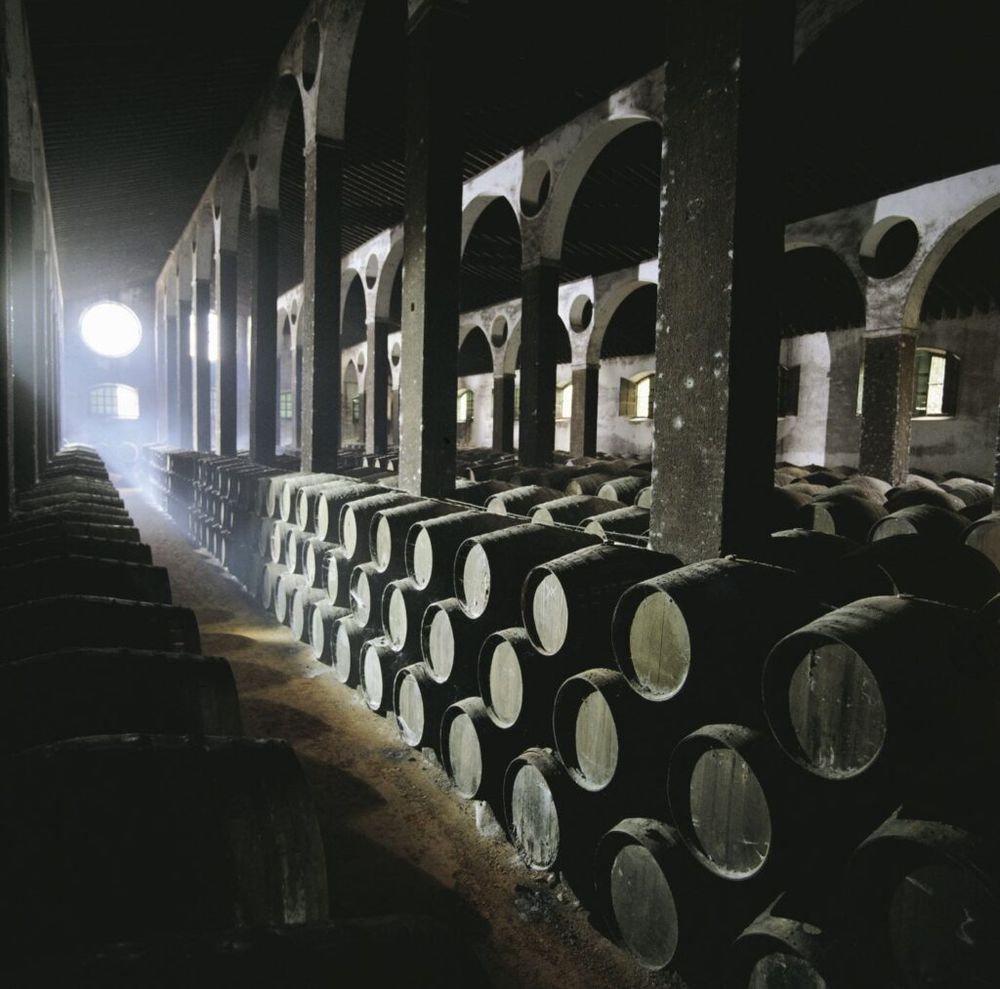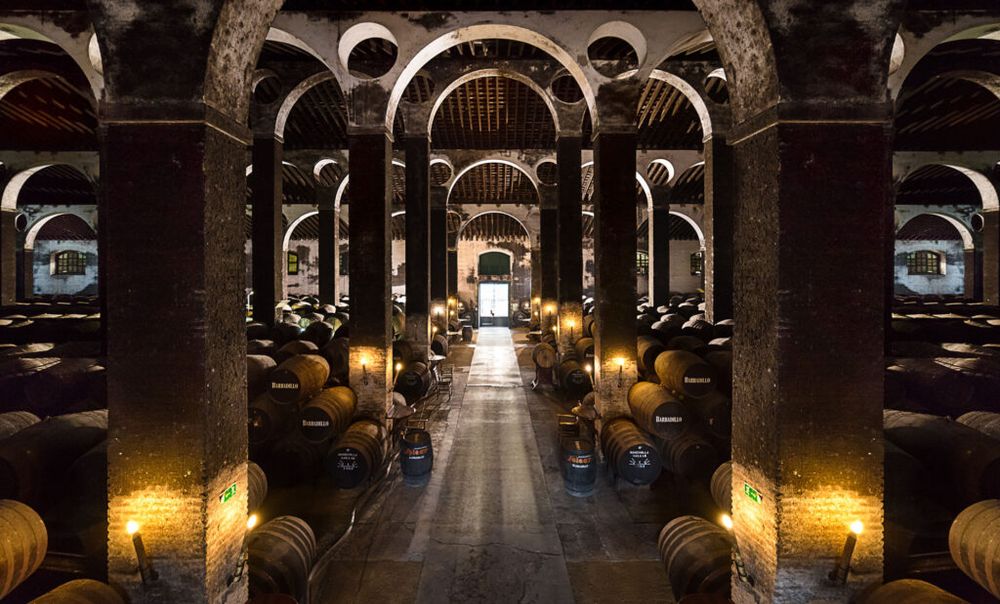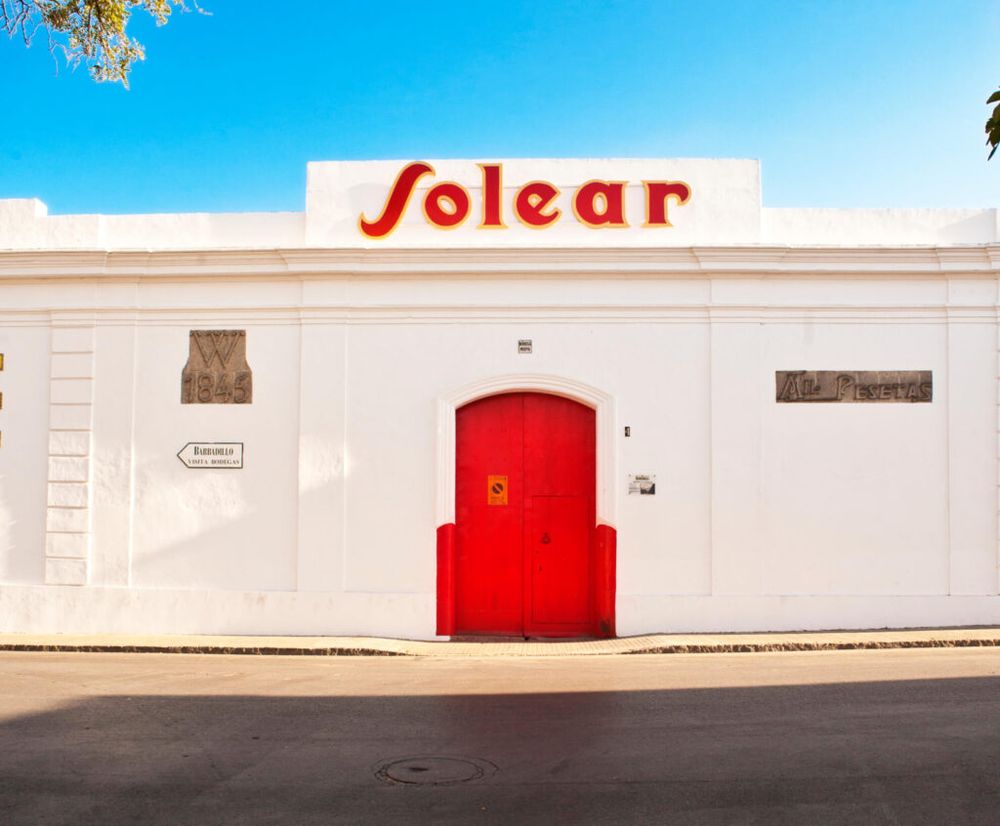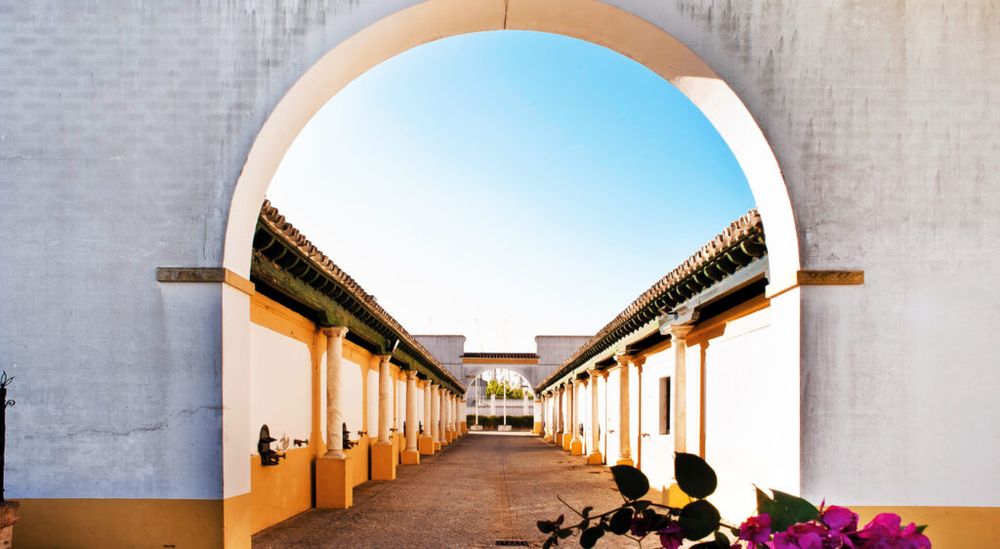“The idea of a Palo Cortado is that you’re trying to get the best of an Amontillado in terms of aroma, and the best of Oloroso in terms of body, mouthfeel and flavour,” says Holt.
When Boris announced Lockdown 2.0 right in the middle of Sherry Week, it seemed rude not to take Sherry Week into Lockdown with us. Tim Holt of Bodegas Barbadillo and 67 Pall Mal did just that with a session entitled ‘Manzanilla and beyond with Bodegas Barbadillo’, transporting us to the bodegas of Southern Spain for a nice bit of escapism.

The tasting was part of this year’s International Sherry Week, the seventh annual sherry celebration organised by Sherry Wines. Holt’s talk followed the humble Palomino grape from the vineyard to the bodega, becoming a Manzanilla and eventually an Amontillado along the way. His line-up concluded with “something quite out of the ordinary” indeed – a Manzanilla-based vermouth.
Bodegas Barbadillo has a very close association with Manzanilla, being the first company to ever name a sherry Manzanilla, the first to sell it in bottle as opposed to the barrels, and one that is still the world’s leading producer of Manzanilla.
But before the bottle comes the bodega

Tim Holt, who is Barbadillo’s sales director and ambassador, began his webinar with a detailed look inside the bodega. Unlike a traditional winery, a bodega is more open and airy due to sherry’s appetite for oxygen. Bodegas Barbadillo owns 16 bodegas that are dotted throughout the best sites in the coastal town of Sanlúcar de Barrameda and collectively house 32,000 casks.
Manzanilla can only be made in Sanlúcar due to its specific microclimate. If it’s 40 degrees in Jerez in summer, Holt estimates it will be down in the 30s in Sanlúcar. This microclimate has been utilised for centuries as part of sherry production.
The bodegas, themselves, are located on elevated ground called the ‘high quarter’ of the town next to the Guadalquivir River, facing out towards the Atlantic Ocean. They have been built here for more than just stunning views during the ageing process – their position and design make them perfect for trapping the sea breeze, which brings lots of humidity, keeps the air cool in the summer and is also believed to give sherry its characteristic salty tang

Bodegas are usually high ceilinged, open and well positioned to encourage the movement of air. Some have windows stretched across the roof to guide the air inside, and some have no structural pillars inside to leave more space. The ‘cathedral bodega’, designed in the 18thCentury, has spacious interiors, arches and pillars that resemble cathedral architecture. Bodegas Barbadillo owns the second cathedral bodega of its kind, built in 1870s “when they worked out how to optimise the microclimate to get the best growth of flor,” Holt explains.
Ah, flor. The main reason for all this fuss over sea breeze. “Flor is a very delicate organism. If it gets too dry, too hot, or too cold it will die off… it will also become very unhappy if it’s in a closed atmosphere. It doesn’t want a dank atmosphere, it wants a breezy, well-aerated area in which to thrive because it is highly aerobic,” says Holt.
Rose Murray Brown MW was interested to know what the effects of our changing climate are on sherry and the flor, but for Holt the microclimate of Sanlúcar faces more imminent threats, such as those made by town planning departments.
“If someone built a block of flats in front of the bodega and stopped the sea breeze, that would be more immediately important than climate at this point.”
Holt explained that the sea, as a moderating factor, does not fluctuate wildly and so the sorts of climatic incidents brought about by climate change are more likely to be experienced inland.

Manzanillas were first up in the tasting
“Manzanilla has been very much a part of the gastronomy here in Andalucía. Its history goes back to the end of the 18thCentury, in writing at least. Bodegas Barbadillo was the first one to ever ship Manzanilla in 1827 so we have a long association with this wine,” Holt began.
The first sherry he picked for the flight was the Solear Manzanilla (37.5cl £5.99-7.99, Full bottle £10.99), a relatively new brand within the bodega that dates back to the 1940s and is now widely found in tapas bars and restaurants throughout Andalucía. The sherry goes through nine stages in the solera system over a period of six years. It is moved widely between bodegas, the increased exposure to air helping to feed the flor, which protects the wine and helps it retain its very pale appearance.
The sherry is also complex, salty and a little yeasty, with distinctive but delicate chamomile notes. In fact, Manzanilla actually means chamomile in Spanish.
“What I find is a great trait for Manzanilla is a smoothness that’s very uniform across the tongue and across the palate. There’s no overriding acidity anywhere. Basically, it’s very easy to drink!” said Holt.
Next up was the Manzanilla En Rama ‘Pastora’ (37.5cl £8.99), a Manzanilla Pasada, aged for an extra two years. Whereas the Solear goes through nine stages over six years, the last two years for Pastora take a slower pace, leading to a thinning of the flor layer which allows a little oxidation.
The end result is a golden sherry with more pronounced chamomile notes. It is a step up in complexity, with a bigger body, a richer, more oily texture and a slight nuttiness on the palate.
The bodega’s Manzanilla Pasadas are all en rama (unfiltered), the way they would have been made a hundred years ago. In fact, Bodegas Barbadillo was the first to pioneer en rama as a modern category in 1999 with four ‘sacas’ (or releases) coming every year so that you can see the influence of the seasons. The first Fino en rama, incidentally, didn’t arrive until 2010 through Tio Pepe.
Manzanilla Pasadas has a level of stability that allows it to keep well unfiltered, says Holt, “as a result you can enjoy all the flavours as if it was straight from the cask. It takes me right back to the bodega where we make it.”

Amontillados and Palo Cortados
The next wine was the ‘Principe’ Amontillado 12 year-old (75cl £28)that has an extra four years ageing on the Pasada Manzanilla and was the overwhelming audience favourite on the night.
On the nose it is a real treat of nuttiness and toffee. “What I love about this wine is the marked hazelnut flavour. It’s dry and well focussed – to me it’s the perfect aperitif,” said Holt.
The ‘Principe’ Amontillado VORS (75cl: £63.10) has bottlings so limited (480 half bottles released in 2020) that Holt was restrained enough not to open a taster for himself. To be a VORS the sherry must be over 30 years old, but this is more along the lines of 50 years and it packs a flavour punch to match. It’s aged in American oak casks that, although old, have given the nose a lovely coconut aroma after 50 years of contact.
Bodegas Barbadillo produces three Palo Cortados, and we tried ‘Obispo Gascon’ Palo Cortado VORS (75cl; £75) – which has a similarly limited production of just 240 75cl bottles in 2020.
“There’s a level of intensity that goes on forever. You only need a sip to really fill up your palate with nuttiness, dried fruit, dried orange. You can taste it several times and always pick up something new in the process,” said Holt.
In dry sherry categorisation, Fino and Manzanilla are two sherries that are aged under flor, Oloroso is oxidatively aged while Amontillado and Palo Cortado begin under flor and then finish ageing oxidatively.
Holt believes that Palo Cortado is the hardest of all sherries to strictly ‘pin down’.
“Palo Cortado has always been a difficult one to define – it depends on each winery,” he explained. “We have certain select-cask Oloroso that originate from free-run juice, and therefore they’ve got a much finer style than your normal second press Oloroso. But it’s also a matter of chance. Each cask can be slightly different depending on its origins and position in the bodega. The idea of a Palo Cortado is that you’re trying to get the best of an Amontillado in terms of aroma, and the best of Oloroso in terms of body, mouthfeel and flavour.”
Sherry’s new clothes
Sherry is one of those drinks that the trade adores but many consumers still aren’t sure about. Many still think it belongs at the back of their granny’s cupboard with the cap screwed tight. Bodegas Barbadillo, like many houses, is always looking at ways to innovate, diversify and to appeal to a younger demographic. This they have done with an insanely good sherry-based vermouth that has been revived at the bodega.
Not only does it taste delicious, but it also has a great story to tell.
Bodegas Barbadillo used to sell vermouth in the 1960s but by the 1970s the market for it had dwindled. Several casks of vermouth and some tonic wine were left behind where they sat idly for 50 years. Workers in the bodega continued to replenish the casks regularly but they had no real idea what was going on inside.
Upon discovery, the 50-year-old vermouth and tonic wine were part bottled and part siphoned into demijohns with some of these original liquids used to blend into a new vermouth. The result? ‘Ataman’ Vermut (50cl £18-20).
Ataman is made as close as possible to the original recipe, passed on by word of mouth from those who worked on the original solera. The new recipe includes absinthe, Seville orange peel, rosemary, wormwood, cassia bark, elderberry and quinine among many other botanicals on a base of Manzanilla, with a small amount of the original stock blended in. When the original demijohns run out they hope to maintain the style solely with the new solera.
The vermouth made its debut in the UK trade this year after the first bottling in early 2019. The reaction has been good and it is already listed in cocktail bars, but Holt feels it works just as well as a standalone spirit. “When I first tasted it I thought it would make a very good negroni, but actually it is in itself in many ways a negroni. You don’t have to do anything, just add a block of ice and a slice of orange and you’ve got a great drink.”
All prices are RRP










































